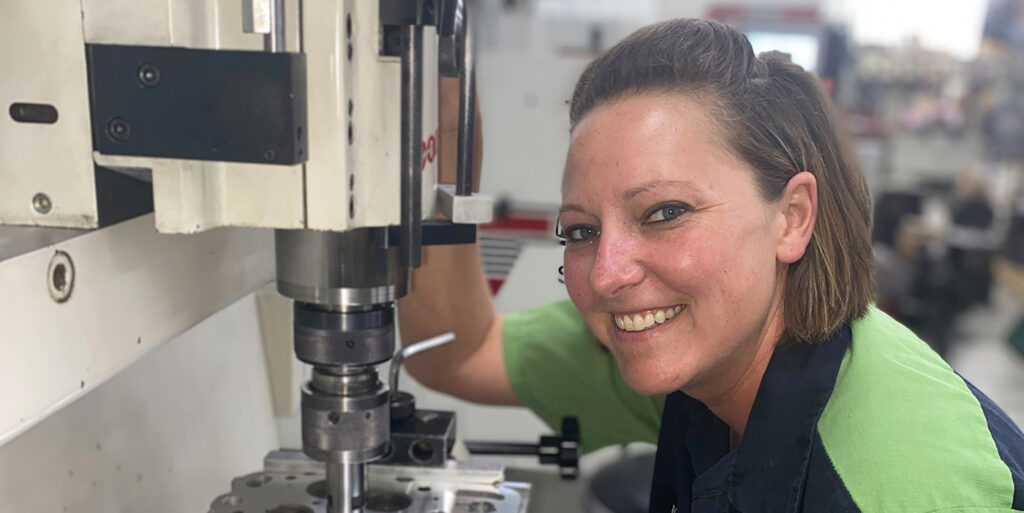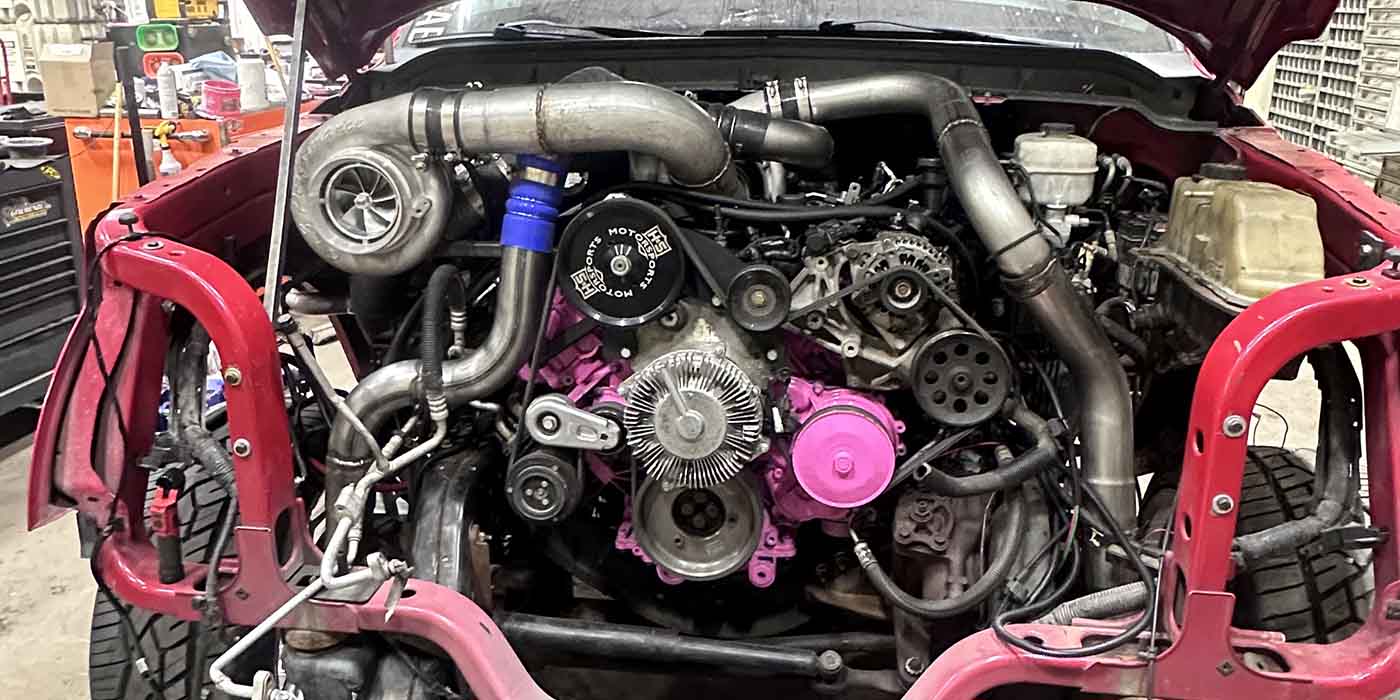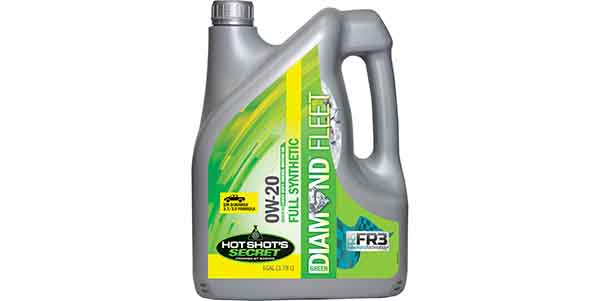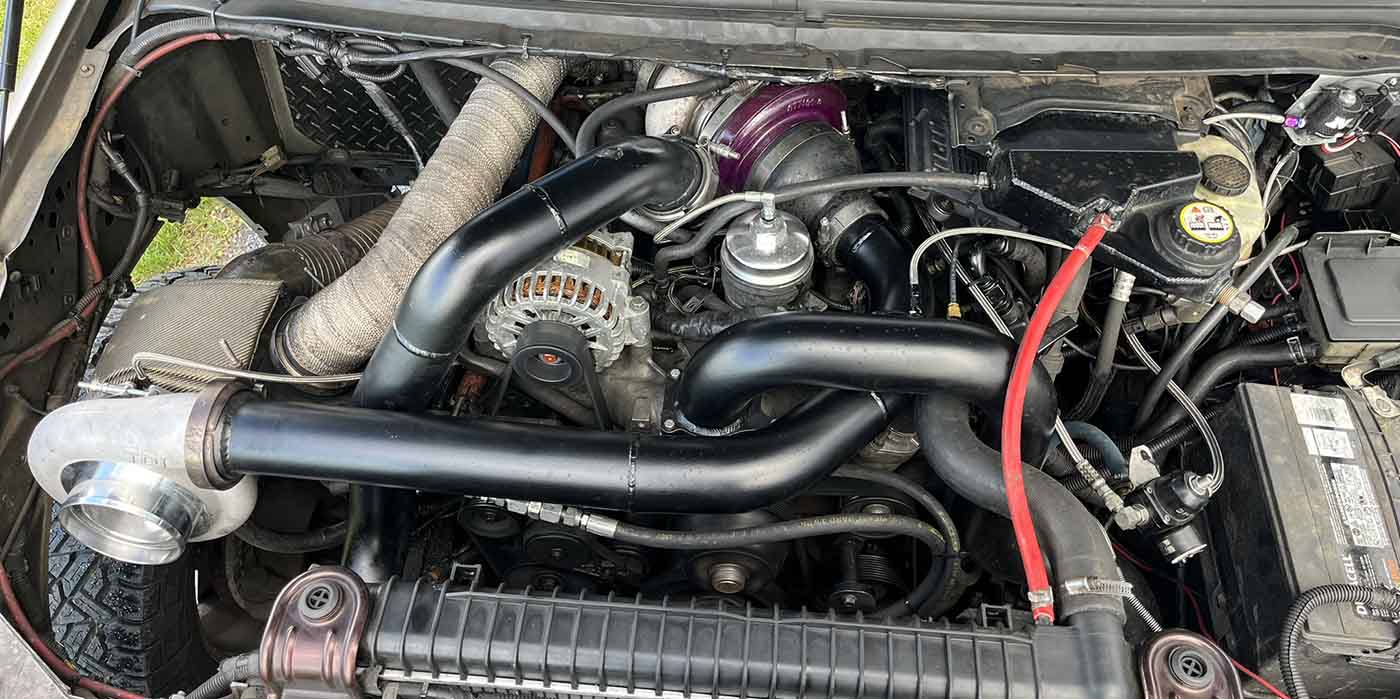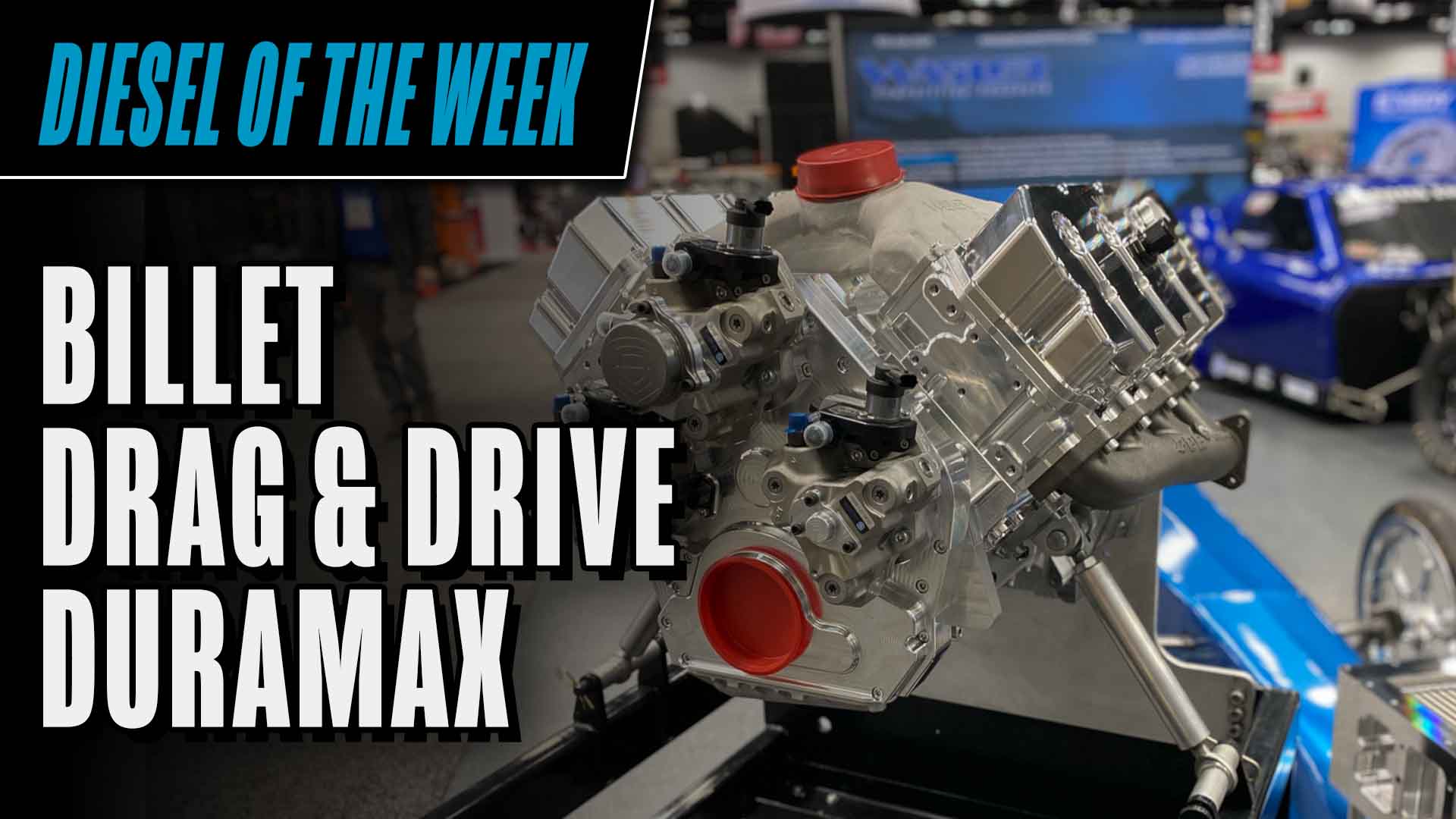Anyone who follows our engine content has likely seen a YouTube series we do in conjunction with LinCo Diesel Performance and owner Jeff McCord called LinCo Lessons. You may have also seen our Mild vs. Wild episode highlighting the Duramax engine platform, which we also filmed at LinCo Diesel Performance. It was during that video shoot that we met Katie Coleman for the first time.
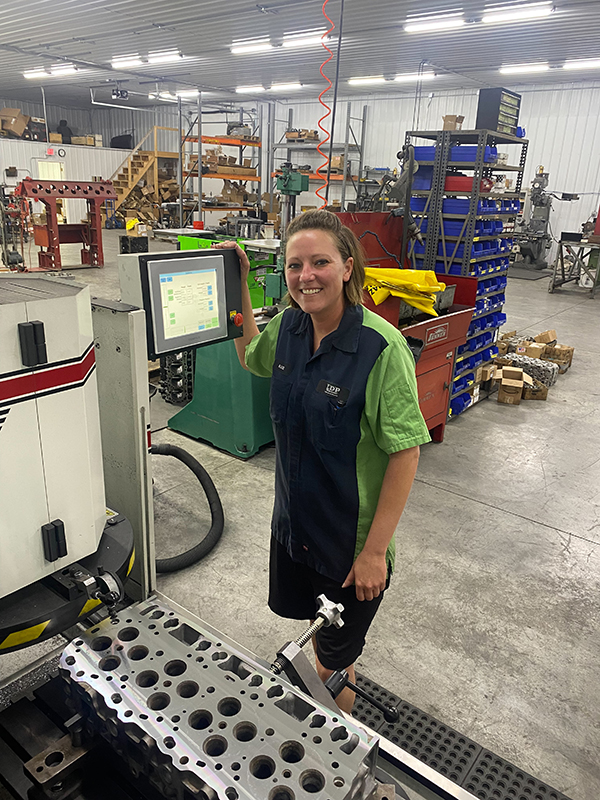
Katie is an engine builder and cylinder head specialist for LinCo Diesel Performance (LDP) who has more than 15 years of engine shop experience. Her level of experience, knowledge and talent is always in high demand, so when she left her previous shop, Creason Racing Engines, Katie might have been the hottest thing going in the St. Louis area.
Her start in this industry came during high school when she needed a job. Katie’s dad knew Joe and the folks at Creason Racing Engines, so she was able to help out with small tasks around the shop to earn some extra cash.
“I did things like sweep floors and take out the trash, and that’s what I did for almost a year,” Katie Coleman says. “Then, the engine builder quit and Joe asked me if I wanted to start building engines. I was like, ‘Oh, okay.’ I didn’t know anything about engines. I knew nothing about tools. I didn’t even know how to put an air tool on an air hose. It was that bad. Joe took me under his wing and he taught me everything about gas dirt track motors and small block Chevys. That’s what we specialized in at Creason’s.”
Katie ended up spending 14 years at the Troy, MO engine shop. She did everything from engine tear downs to machine work to engine assembly. The experience made her appreciate engines and engine work, as well as a career in this industry.
“It’s all fascinating,” she says. “It’s like an art.”
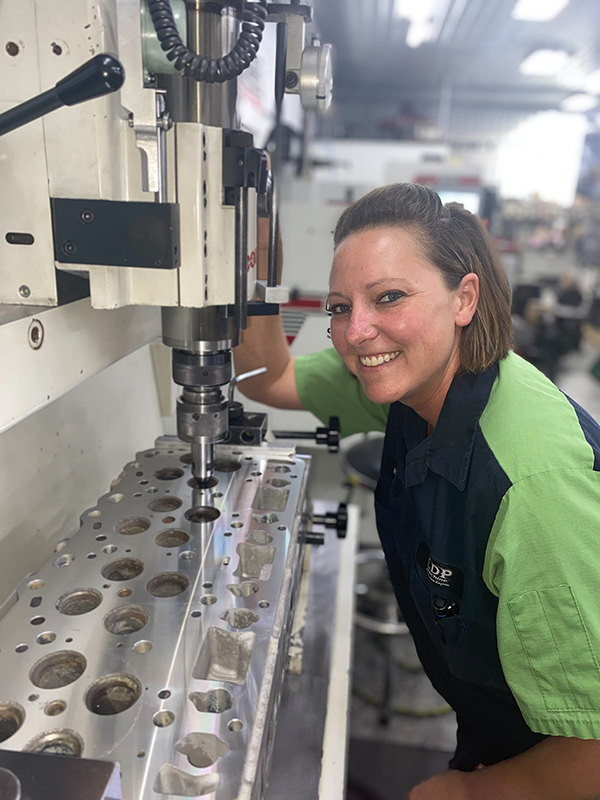
However, after 14 years at Creason Racing Engines and learning all about gas engines, Katie was looking for something different. As mentioned, her talent was in high demand, and it was LDP, which had just opened a brand-new 25,000 sq.-ft. diesel shop next to its also new 8,000 sq.-ft. machine shop, that captured Katie’s attention.
“I wanted something different, and that’s where the diesel world came in,” Coleman says. “Jeff called me on the phone and persuaded me to come work for him. I’m still learning a lot at LinCo. It’s definitely different than gas motors. It’s a lot different, but at the same time similar. I never thought in a million years I’d be working on diesels. I like it.”
She’s now been an engine builder and a cylinder head specialist at LDP for over two years. In that short amount of time she’s come to find that diesel work is giving her that new challenge she was wanting.
“The diesel stuff is a lot more greasy,” she laughs. “I had never worked on Cummins, Duramax or Powerstroke ever. When I came here, I honestly didn’t know which was which. That’s kind of how I was at Creason’s, but now Jeff is teaching me what everything is. The nice thing is I’ve used all the machines such as the seat and guide machine, the surfacer, the boring bar, etc.”
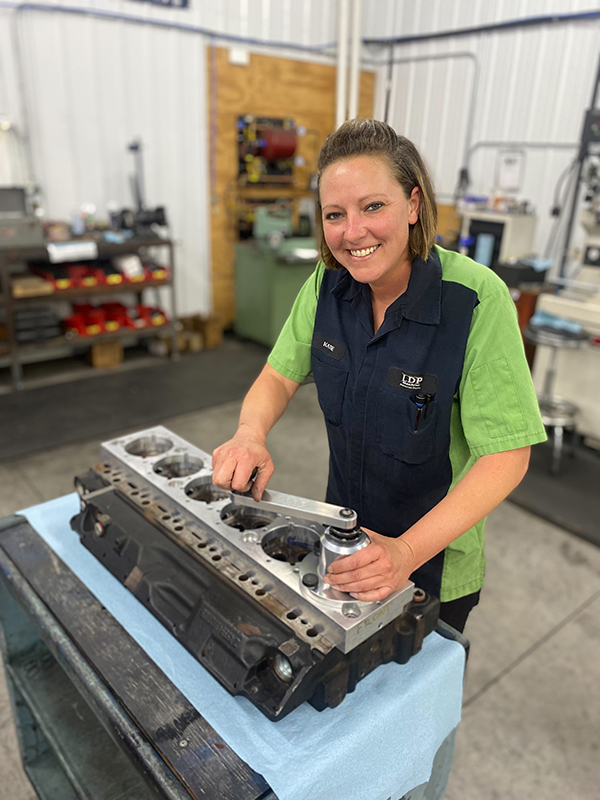
After spending much of her life in engine shops, Katie says she’s experienced a lot that she’s really enjoyed about this industry, but also some negative aspects of it too.
“There’s something about the smell of a machine shop that I really like,” she says. “I also like seeing the customers when they come in for their finished product and seeing how happy they are. However, I have had a few that came in, looked at me and said, ‘She’s building my engine? Nope.’ They walk away and get their engine done by someone else and it blows up, and then they come crawling back and apologize. That actually happened twice.
“That actually happened when I was at Creason’s and it hurt my feelings, but I was also young. I don’t really understand the folks who think a woman can’t build an engine. You’ve just got to look past it. No one has refused my work since Creason’s. Despite that stuff, I just love it. I love working with the machines. I’ve done this more than half my life. It’s my family. It’s my thing.”
While gas and diesel engines have plenty of similarities, there’s a ton of differences that make the work seem worlds apart. That’s where Jeff has helped Katie broaden her horizons at LDP.
“Just putting an engine together in the assembly room, it’s so different from gas,” she says. “Things such as grinding rings or the bearing clearances and anything like that is similar. It’s things like the injectors and glow plugs that make diesels much different than small block Chevys. I do really like the Duramax platform, because they’re light. I’ve been doing a lot of Cummins heads lately too.”
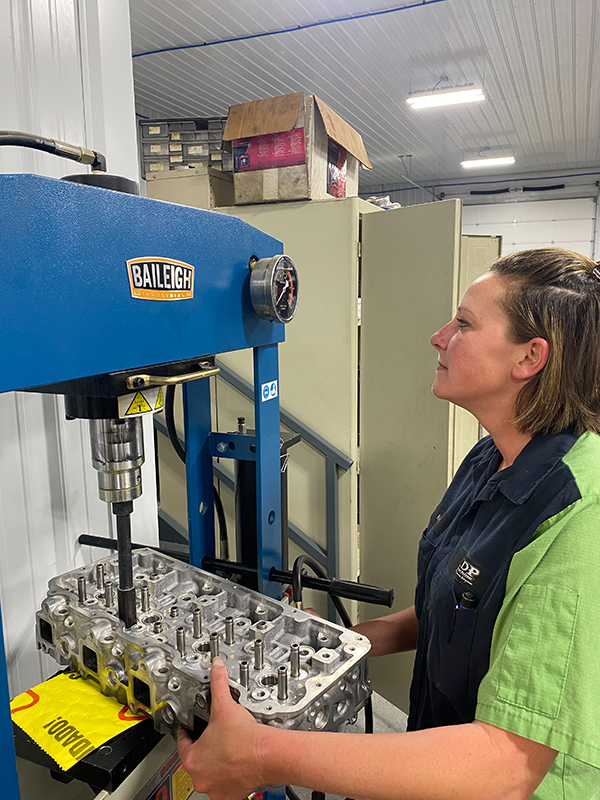
Speaking of Katie’s cylinder head work, there’s a lot that she has to do on a daily basis when it comes to the machine work she’s responsible for and the components she needs to know how to install. It keeps her very busy.
“When I start on a cylinder head, I have to check to see if the guide clearance is good,” she says. “If it’s not, then we have to change guides or put guide liners in it. Next step is to see if they have cracks in the seats. For most Cummins heads, we’ve been putting new seats in no matter what, because they fall out. Then, I’ll resurface the cylinder heads and do three-angled valve jobs. I also grind the valves. The installed height for springs needs to be perfect. The springs themselves need to be perfect, so you have to test all those. Even though they’re brand new in a box, that doesn’t mean they’re legit. You have to test every single spring.
“I also put o-rings or fire rings in the heads, which is a new thing for me. That is actually very therapeutic for me. I like doing that.”
Despite her new role at LDP and working with diesel engines, Katie is still very fond of the small block Chevy platform.
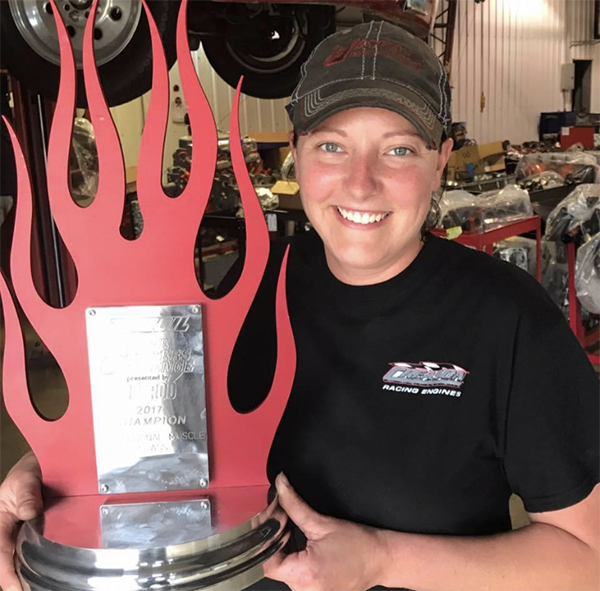
“If you put a small block Chevy in front of me, I’ll just love it,” she admits. “At Creason’s, one of my fellow workers made a bet that I couldn’t tear down a small block Chevy in under one hour. I did it in 50 minutes. He owed me lunch the next day. I can literally close my eyes and put a small block Chevy together. Transitioning to diesels isn’t taking me too much time, but it’s different and new.”
No matter what engine platform Katie is working on, she’s found a true love for this industry and for her work, which she’s been able to share with others who have an interest in doing what she does.
“There’s a young lady who came into our shop a couple months ago and I’m teaching her, and she reminds me a lot of me when I was her at 18,” Coleman says. “She’s very eager to learn and I’m very happy to be her coach. When it comes to this stuff, you have to stick with it. You learn stuff every day. It’s fascinating work.”
As for Katie’s future, she looks forward to becoming even more entrenched in the diesel world, and hopes to begin building more of those diesel engines very soon.

